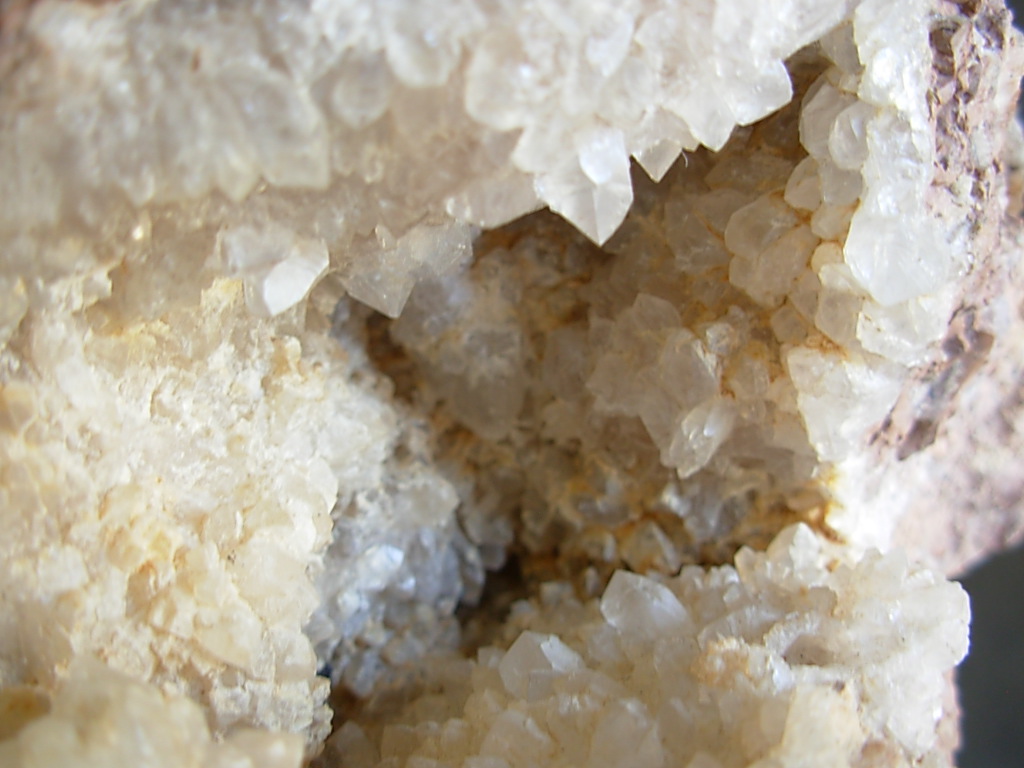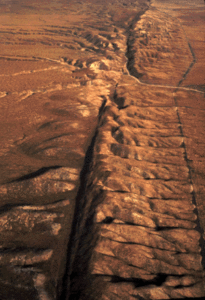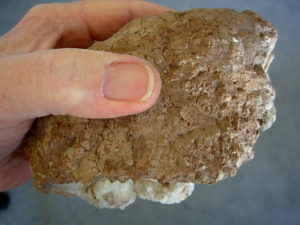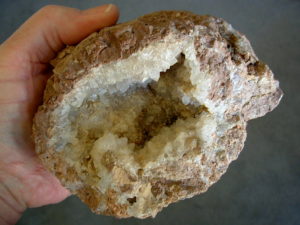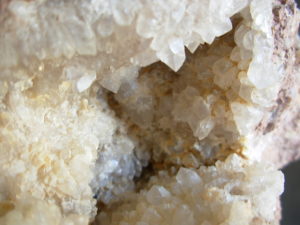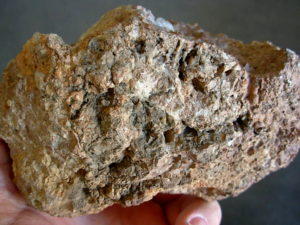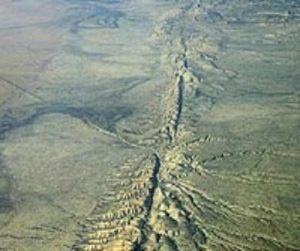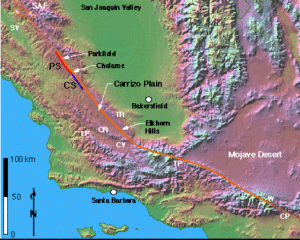Rare Geode from San Andreas Fault
Item # SAFG03120004
Rare Geode from the San Andreas Fault in California

This specimen weighs 2.45 lbs (1113g) and measures 5.5 x 3.5 x 3.1 inches (14 x 9 x 7.9cm)
This Rare Specimen was hand dug out of the San Andreas Rift Fault opening that is just out of Elkhorn Hills near Fellows and Midoil which are NorthWest of Ford City and Maricopa.
We obtained this specimen from an old timer rockhound who prospected from Needles to San Bernadino areas. He took a trip years ago to view the visible Rift that transverses from the Elkhorn Hills up through the Carrizo Plain where one can see the actual movement history of the Fault.
Standing on one side of the trench viewing the other side, viewing a reference point, The San Andreas Fault is documented to be moving at a rate of 1.5 inches per year (that is 125 feet every 1000 years) Often times there is no constant movement and then a large quake occurs where 10 to 20 feet of movement is visible. ( This was seen on the news years ago showing a fence that used to go straight across the fault had moved.)
This specimen appears to be a rhyolitic -clay type of base matrix that formed a gas bubble during a volcanic or geo-thermal event and a vug was formed lined with quartz crystal points. This specimen has been in our personal collection for many years now.

